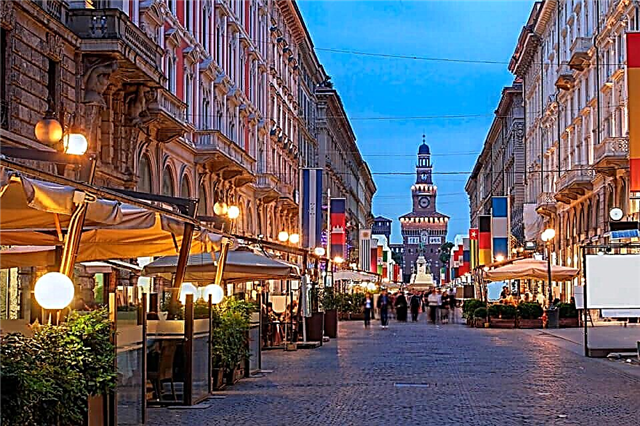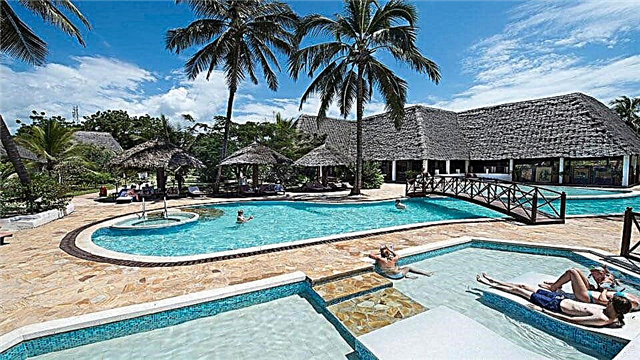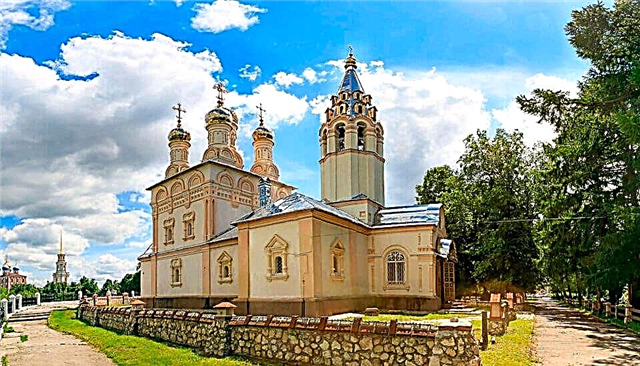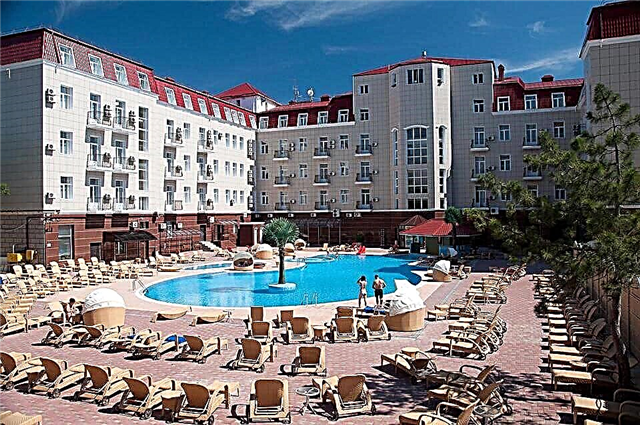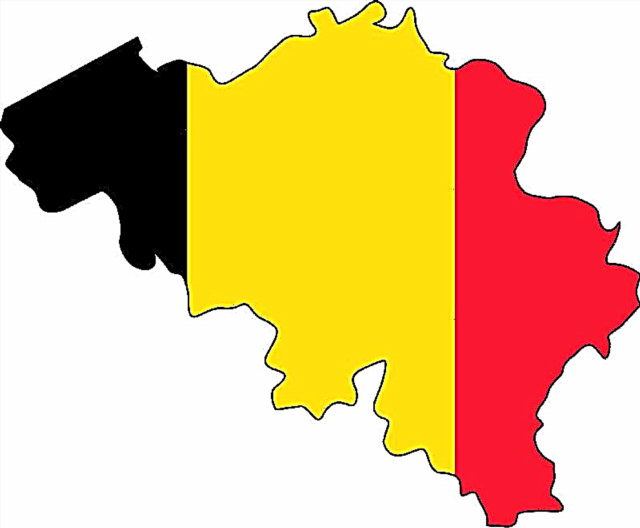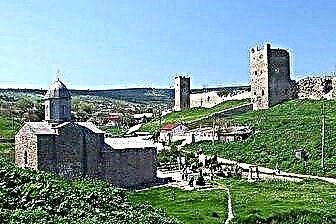One of the warmest and sunniest resorts in Crimea is the Feodosia district. The sea warms up here already in early June, so the swimming season lasts longer than in other parts of the peninsula. Feodosia is located on a long sandy coast, which is why local beaches are considered the most convenient and comfortable for relaxation.
In terms of the number of historical sights, the city is not inferior to Sevastopol and the iconic places of the southern coast of Crimea. There are many medieval temples, the ancient Kafa fortress, as well as picturesque mansions of the 19th-20th centuries. Many places in Feodosia are associated with the name of the great artist IK Aivazovsky, who was born here, lived and created his incomparable seascapes.

Apartments and hotels at affordable prices.
from 500 rubles / day
What to see and where to go in Feodosia?
The most interesting and beautiful places for walking. Photos and a short description.
Genoese fortress Kafa
Medieval fortification of the XIV century, built during the times of the Genoese Republic that existed in the Crimea. The bishop's residence, consular palace, court, administrative offices and utility rooms were located here. Most of the structures were demolished in the 19th century. Only part of the walls, several towers, a bridge, Armenian churches and the building of Turkish baths have survived to this day.

St. Constantine Tower
The structure was erected in 1382 to protect Theodosia (Kafa) from attacks from the sea. In 1475, after the capture of Crimea by the Ottoman Turks, an additional bastion was added to the tower (today only the foundation has survived from it). At the beginning of the 20th century, the tower of St. Constantine was restored by specialists invited from Italy. In this form, it has come down to our days.

Cottage Stamboli
Villa on Aivazovsky Avenue, built in 1914 for the merchant I. Stamboli. After the October Revolution of 1917, the dacha was nationalized. Since 1921, a sanatorium was located here, later - a military hospital and clinic. After the collapse of the USSR, the premises became private property, and a restaurant worked on its territory. Since 2013, the Museum of Underwater Archeology has been operating here.

Cottage Milos
The structure was erected in 1911 according to the project of M.F. Piskunov for I.S.Krymov, a descendant of the ancient Karaite dynasty. The name "Dacha Miloss" was given in honor of the goddess Venus de Milo. The mansion is built in an elegant neoclassical style. Its facade is decorated with a massive Greek portico with columns in the form of statues. In Soviet times, the building served as a dormitory building of the Voskhod sanatorium.

Aivazovsky Art Gallery
Museum, where works of the famous marine painter I. Aivazovsky are exhibited. The first exhibition was opened in 1845 on the territory of the mansion where the artist lived. In 1922 it was transformed into a state museum. In addition to several hundred works by Aivazovsky himself, about 12 thousand marine-themed paintings by various masters are exhibited here.

Alexander Green Museum
Memorial Museum dedicated to the writer A. Green - the creator of the story "Scarlet Sails" and other equally interesting works. It is located in the building of 1891, where A. Green lived from 1924 to 1929. The side wall of the mansion is decorated with a relief panel "Brigantine". The exposition consists of household and interior items that belonged to the writer. The museum regularly hosts exhibitions, creative evenings and meetings with writers, artists, musicians.

Museum of Marina and Anastasia Tsvetaev
The collection of the museum is dedicated to the Crimean period of creativity of the Tsvetaev sisters. It is composed of exhibits provided by the House-Museum of MA Voloshin, the Feodosia Museum of Local Lore, the Art Gallery. Many items in the collection were acquired from private collections. A. Tsvetaeva lived in the house where the exposition was located in 1913-14. Her sister Marina was often here.

Museum of the sculptor Vera Mukhina
Vera Mukhina became famous all over the world thanks to her 25-meter monumental sculpture "Worker and Collective Farm Woman", created especially for the 1937 World Exhibition in Paris. A museum dedicated to the sculptor was opened in 1985 on the very spot where the house of Vera Ignatievna's family was located. The exposition reproduces fragments of V. Mukhina's room and her creative workshop.

Feodosia Museum of Local Lore
In 1811, the Feodosia Museum of Antiquities was opened (later renamed the Museum of Local Lore). At first, it simply served as an artifact repository. In 1871, a separate building was built for the impressively expanded collection at the expense of I. In the XX century, the exposition moved two more times, until it settled in a mansion of the XIX-XX centuries, where it is still located.

Feodosia Museum of Money
Since ancient times, coins have been minted on the territory of Feodosia. Ancient Greeks, Genoese and Crimean Tatars had their own money. At the beginning of the 19th century, the first numismatic exposition was created within the framework of the Feodosia Museum of Antiquities. The modern money museum was founded in 2003 on the initiative of O. Romanovich, a local collector. At the moment, about 30 thousand coins are stored in its funds, the most ancient of which date back to the 7th century BC. e.

Surb Sarkis Church
Armenian temple of 1330, which in the XIV-XVI centuries served as the spiritual, cultural and educational center of the Armenian diaspora. Prominent thinkers and artists of that time worked here - Baberdetsi, Avetis, Christosatur, Simeon and others. Valuable manuscripts created in this church are kept in Paris, Jerusalem and Vienna. Near the temple there is a cemetery where I. Aivazovsky is buried.

Grave of I. Aivazovsky
The outstanding marine painter was buried in the courtyard of the Armenian temple Surb Sarkis in a place of honor for his especially valuable contribution to the cultural development of Feodosia and the whole Crimea. At the beginning of the 20th century, by order of the artist's widow, a marble tombstone was erected on his grave, made by the Italian sculptor Biojoli. In 1944, she herself was buried next to the artist.

Temple of the Iberian Icon of the Mother of God
The first mention of the temple dates back to the XIV century, although it is believed that it existed long before that time. Before the arrival of the Ottoman Turks in Crimea, the temple was the Armenian Church of St. John the Baptist. At the end of the 19th century, it was re-consecrated in honor of the Iveron Icon of the Mother of God. The last restoration work was carried out here in 1996. At the moment, the church is active.

Mufti Jami Mosque
The historical Friday mosque of Feodosia, built in the first half of the 17th century. The building was built with funds from the Turkish community, modeled on the temples in Istanbul. At the end of the 18th century, after the entry of Crimea into the Russian Empire and until the beginning of the 20th century, a Catholic Armenian church was located on the territory of the mosque. In the 1990s. the building was returned to the Muslim community.

Church of St. George
In the XIV century, the temple was the Catholicon (main church) of the Armenian Catholic monastery of the Holy Great Martyr George the Victorious. In those days, numerous pilgrims went from here to the Holy Land. In the 19th century, the church was rebuilt, resulting in an octahedral domed tower typical of Russian temple architecture.

Church of St. Catherine
The temple was founded in 1892 on the birthday of Catherine II. The project of the building was created in accordance with the architectural traditions of the 17th century. The building was erected by a team of volunteers at no cost. The Church of St. Catherine is a very beautiful and elegant building that adorns the city landscape.Its façade is strewn with numerous decorative arches and paintings and topped with gilded domes.

Sailor park
The park is located on the site where a large slave bazaar was located during the early Ottoman Empire. The market sold slaves stolen by the Tatars from Southern Russia and Eastern Europe. The square was laid out in memory of the sailors who died during the defense of Feodosia during the Great Patriotic War. The territory of the park is decorated with wooden sculptures created from old trunks.

Aivazovsky fountain
The fountain was opened in 1888. At first, the city authorities wanted to name it in honor of Alexander III, but the emperor preferred that the source be named after I. Aivazovsky, taking into account the artist's merits to the city (especially the fact that it was built at the expense of the painter). The fountain was part of the Feodosia-Subash aqueduct, which supplied Feodosia with fresh water.

Fountain "Good Genius"
Memorial fountain of 2004, erected in honor of I. The first monument was created by grateful townspeople in 1890 in honor of the day when the artist gave Feodosia a deed of 50 thousand buckets of water per day from Subash springs, which belonged to his wife. During the Great Patriotic War, the monument mysteriously disappeared. The new monument was built half a century later with municipal funds.

Feodosia Dolphinarium "Nemo"
The Dolphinarium opened in 2012 and has since become a popular city attraction. It is a complete entertainment center for the whole family. Here you can visit entertaining shows with dolphins and sea lions, swim with these amazing animals, as well as take pictures and get a positive charge for many days in advance.

The first city beach
Sandy beach in the central part of the city, stretching 300-350 meters along the seashore. Its width ranges from 40 to 50 meters. Due to the convenient descent into the sea, as well as the shallow and gentle bottom, the beach is very popular among tourists with children. All the necessary infrastructure for a comfortable stay has been created here. You can swim on the beach since spring, as the water here warms up quickly enough.

Beach "Pebbles"
The beach is about 1 km long, located in the central part of Feodosia. It consists of a mixture of fine pebbles and sand and has a gentle entrance to the sea. On the beach there is an entertainment complex with attractions, water transport rental, cafes and numerous souvenir tents. In high season, the beach is visited by a fairly large number of tourists, so it can be crowded here.

Golden beach
Well-groomed sandy beach, located in one of the best resort areas of the urban district of Feodosia. The place has a convenient location, excellent climate and warm water. A picturesque view of the bay opens from here. The beach is equipped with parking and sports grounds. Most of its territory belongs to the tourist complex of the same name.

Beach club 117
A popular resting place, located at 117 km of the Simferopol - Kerch highway. The Beachclub 117 complex includes a beach, nightclub, day bar and restaurant. Music festivals and celebrations are constantly held here, to which famous DJs are invited. In the daytime, visitors can do water sports, sunbathe or play volleyball, and at night they can dance to good music.

Ilyinsky lighthouse
The structure is located on the Cape of St. Elijah, 4.5 km from the center of Feodosia. The lighthouse was put into operation in 1899. In 1910, his somewhat primitive equipment was modernized. The last replacement of outdated structures with modern ones took place in 2006. The area around the lighthouse serves as an excellent viewing platform for tourists. It offers panoramic views of the picturesque harbor.


